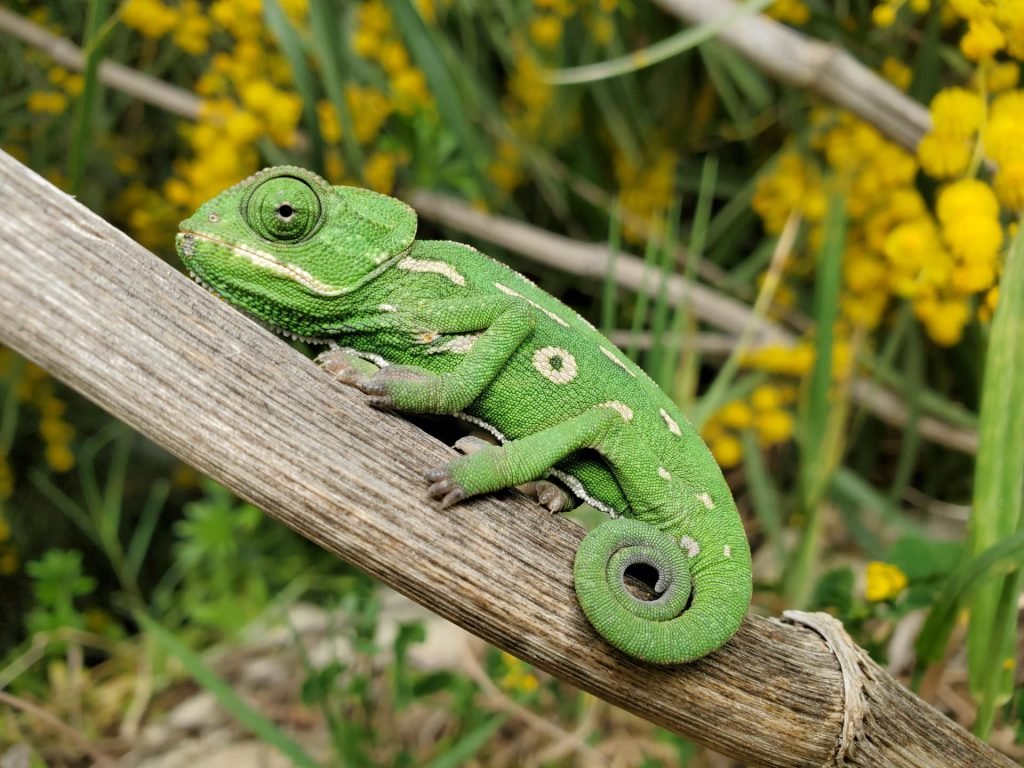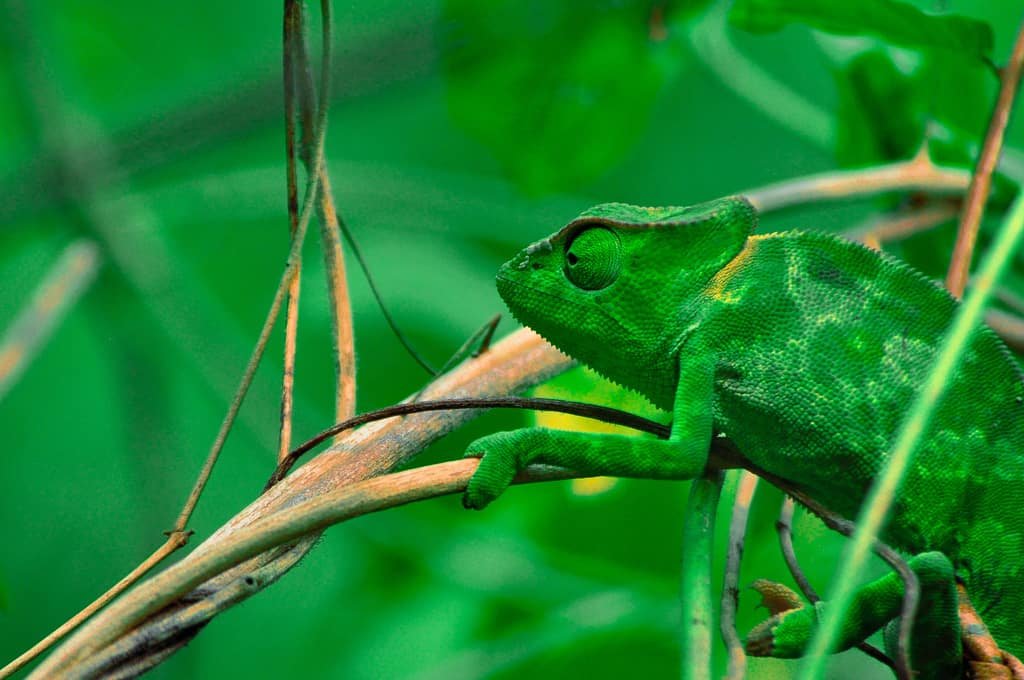The Chameleon is a very talented reptile animal species. Chamaeleonidae sp. is the scientific name for Chameleon. This lizard species live in warmer climates all over the world. Chameleons have a small or large body with four feet and five toes on each foot. The Chameleon’s head is made up of two large, rotatable eyes. Chameleons’ tails can also be curled, and their skin is dry and scaled. Most Chameleon species have the ability to change their skin color for camouflage. So here are 15 amazing facts about this colorful creature.
- Chameleons can move their eyes independently. One eye can be looking forward and one eye backward at the same time.
- There are nearly 160 species of chameleon present today and are found in the areas of Africa, Madagascar, Spain, and Portugal, across south Asia, Sri Lanka.
- The tiniest Chameleon on the planet is Brookesia Micra, and it is found in Madagascar can be about 29mm (1.1 inches) in size.
- Chameleon has the most unusual vision on the planet as their eyes can have 360 degrees of vision and can zoom in, zoom out, and binocular vision.
- They can see in both visible and ultraviolet light.

- There are over 150 species currently known, and additional ones remain to be named. There are four genera of true chameleons Bradypodion, Brookesia, Chamaeleo, and Rhampholeon. There are two other genera (Calumma and Furcifer) that some researchers recognize.
- Four genera of true chameleons have been described: Bradypodion, Brookesia, Chamaeleo, and Rhampholeon. There are two additional genera (Calumma and Furcifer) that some researchers recognize. More than 150 species are currently known, and additional ones remain to be named.
- They have monocular vision(seeing with each eye independently), which allows them to have a more detailed picture.
- The largest Chameleon is the parsons chameleon which can grow up to 27 inches(69.5 cm).
- Just like snakes, chameleons do not have a middle or outer ear, so there is neither an ear-opening nor an eardrum, but they are not deaf. They can detect sound frequencies in the range of 200-600 Hz.

- Chameleons have a lifespan of over 2-3 years in the wild and 5-7 years in human care, whereas Jackson’s Chameleon can have a lifespan of over ten years.
- Their skin has a superficial layer that contains pigments, and under the layer are cells with guanine crystals. They can change color by changing space between guanine crystals, which further alters the wavelength of light reflected off the crystals, which changes the color of the skin.
- Chameleons are mostly oviparous (lay eggs, and they hatch in the nest), while some are being ovoviviparous (eggs are hatched within the parent’s body). The females dig a hole from 10-30 cm (4-12 in) and deposit their eggs there.
- Large species lay about 80-100 eggs, whereas small species lay 2to 4 eggs. The eggs take long to hatch and can range from 4 to 24 months.
- The tongues of chameleons are as long as its body or even longer. Some chameleon types have a tongue longer than two times of their body.
References
- Britannica-Chameleon
- Wikipedia-Chameleon
- A-Z-Animals.com(total species of chameleons)
- Asknature.org(Eyes 360 degree vision






